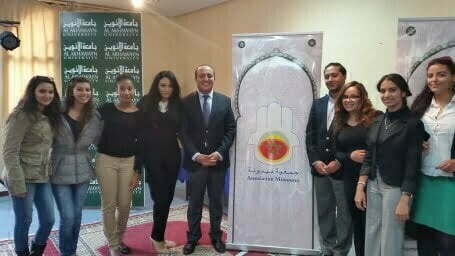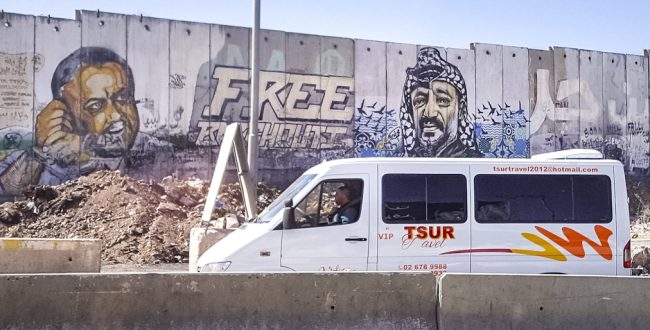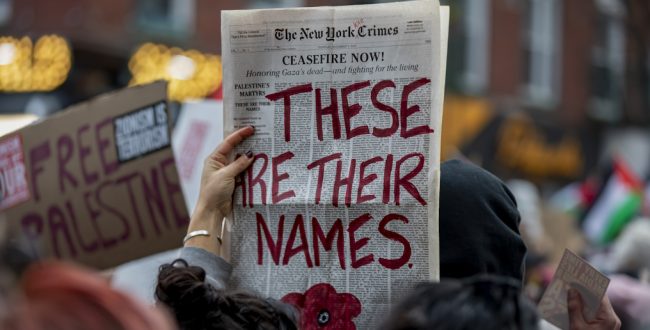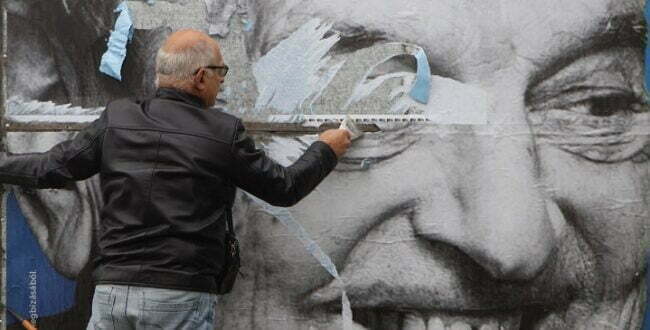For years I have been jetting between Israel and Morocco. What began as a personal and modest exploration of my family’s roots evolved over time into a journey to examine the history of Moroccan Jewry’s departure to Israel, and the community’s remnants. Like historical investigation, this excavation raises questions about present Moroccan Jewish identity, which also has implications for the future.
With each visit, more pieces of the puzzle were revealed. During my last trip to Morocco, I resided for two months in Casablanca, the country’s economic capital, where I experienced the crowded city, which can be unbearable at certain times. Eventually I was exposed to the rich cultural diversity of the city and learned to appreciate it.
Today, more than seven million people live in Greater Casablanca, the vast majority of them are Muslims. Only about 2,500 Jews remain – a remnant of a once thriving community. Today the Casablanca Jewish community exists completely independent of the Muslim majority, and includes rabbis, a shochet, a mohel, several schools and 30-11 active synagogues. Cemeteries and social institutions tell the story of a community that is almost gone.
Let us momentarily disregard dry data for a moment, as much more can be learned from the stories of people living day-to-day lives in the remaining Jewish community. Fanny Margie, a Jewish Moroccan woman who owns a ladies’ fashion business, made her way from Morocco to France, then to Israel and a few other countries on the way, finally returning to Morocco full of perspective and insight.
Through her stories, I saw the narrative of a community with almost nothing left but infrastructure, institutions, and organizations. She allowed me to visualize and sense the decline the community experiences with the departure of Moroccan Jewry, and I felt the constant longing of those who remained for its once glorious past. At moments during the recounting of her personal experience, an uncontrollable sadness would flood her eyes, and it seemed as if she cannot extract herself from the past.
Fanny is like a mirror upon which my own experience of Morocco is reflected, as I had arrived in Morocco with very little knowledge of the country’s Jewish heritage. Until my first visit, the Moroccan Jewish story in Israel has been awfully lacking in content and complexity. I had a limited understanding of what it meant to be a Moroccan, and I refused to settle for culinary compliments and jokes about Mizrahi Jews. I wanted to deeply understand the Moroccan heritage and to know the community’s voices, leaders, and diversity. One could say that this personal journey was an attempt to quench a long-lasting thirst.
Although most Jews have long since left Morocco, deeming the notion of a remaining “community” questionable, two important historical sources remain: the organizational infrastructure of the community and the Muslim residents of Morocco.
“There is no longer a Jewish community in Morocco, there are only organizations and institutions,” Fanny said in response to my unceasing questions and my feverish search for clues. Contemporary Jewish institutions are managed and operated by the older generation, and particularly in Fez, Marrakesh, and Meknes where only a handful of Jews remain. One can easily sense this decline and must wonder where the young people of the community have disappeared, and why they are absent from positions of local leadership. The sensitive nature of this quandary led me to refrain from exploring it.
I sought the difficult answers through my interactions with the Muslim and Christian residents of Morocco. The excitement among local Muslims is evident, and they clearly desire to share stories passed down through word of mounth about the Jews of Morocco. I got the impression that many Moroccans see the maintenance of this history as a duty, constantly stressing the fact that these Jews were just as Moroccan as any Muslim.
The Jewish story has recently returned to the media in Morocco. One weekend I bought a newspaper and was surprised to find in its pages an extensive historical investigation on the subject of Moroccan Jewry and its welfare initiatives. additionally, in recent years films about Moroccan Jewry have been screened on national channels, igniting lively social discussions about Moroccan Jews today and about those in Israel.
One of the most prominent of these films was directed by Kamal Hashkar, titled “Tinghir Jerusalem: Echoes from the Mellah,” released in 2012 and screened on the Moroccan state channel M2. The award-winning film was shown throughout Morocco and the Arab world, generating many discussions in the media. The director made a connection between the Muslim Moroccans and the Jewish Moroccans living in Israel, challenging many Arab and Islamic perceptions of Israel as an alien entity in the Middle East.
More than anything, I was captivated by a group of young Muslims, who in 2007 established the Mimouna organization, whose goal is to introduce young Moroccan Muslims to the story of Moroccan Jewry. When they first mentioned Mimouna, I chuckled at the organization’s name; it sounded superficial to me, because then I was only familiar with the Mimouna in the Israeli context as the coveted post-Passover feast.
In Morocco, however, Mimouna has a more complex significance. Every Passover Jews were separated from the Muslim community because of the sensitivity of food restrictions. For example, Jews would refrain from hosting their neighbors or buying their groceries from Muslims. At the end of the Passover holiday, the Jews invited their Muslim friends to celebrate with a feast and to mark the return to normal relations between the communities. For the Jewish minority living among a Muslim majority, the Mimouna was a signal of friendship and good neighborliness.
In the past decade, Mimouna has been active throughout Morocco striving to keep the memory of communal cooperation alive. In 2011 the State Constitution recognized Hebraic as an inseparable part of the Moroccan heritage. Moroccan nationalism is heterogeneous and multicultural, and the cultural diversity that characterizes Moroccan identity is seen as an advantage and as an important Moroccan value. This is more difficult for the younger generation of Moroccans who are less familiar with the Jewish heritage of their country and have had minimal exposure to its expression or historiography.
The void has largely been filled with inflammatory content about Israel, which often reaches Morocco through Islamist and pan-Arab media, and paints Jews and Muslims as sworn enemies. And so, as time goes on, the memory of the special historical relationship between the two religious groups in Morocco has been eroded.
What brings young Muslims to establish an organization whose orientation rejects the erroneous dichotomy between Jews and Muslims? My conversations with members of the organization revealed that much of Morocco’s youth were originally surprised to discover the mysterious presence of Moroccan Jewry in their nation’s history. This discovery took place primarily through stories passed down from grandparents.
Today the organization has dozens of members with an array of initiatives throughout Morocco’s urban centers. These initiatives include Hebrew lessons, tours of Jewish sites, Kosher dinners, and a travelling vehicle with information that goes from place to place. The organization preserves a memory that threatens to disappear, revives its legacy, and gives hope to those who fear the disintegration of their past.
Elmehdi Boudra, one of the founders of Mimouna, spoke with me in Marrakesh about the difficulties facing the Moroccan Jewish community, mentioning its strong French orientation and the disengagement from Moroccan Muslim society under French colonial influence. We also discussed the role of history books in supporting this detachment, and the lack of a young Jewish leadership attempting to recreate ties.
I asked Elmehdi the inevitable question, which has been echoing in my heart for a long time: “Is the detachment of Judaism from Morocco merely the distinct direction of history?” Elmehdi looked straight and replied confidently: “No, it is still possible to save the remaining communities in the big cities – in Fez, in Marrakech and in Casablanca.”
“The first thing that needs to be done is to incentivize promising young Jews to stay in Morocco through scholarships at top universities, and to create a motivated and active leadership”. I was completely surprised by his visionary perspective and his confidence in its potential success, and he made me wonder if I was the pessimistic or was he the crazy one.
Around us the palm trees filled almost every vacant plot. Their conspicuous presence has a very particular reason, since the law in Marrakesh protects them and forbids their destruction. This is a law that Moroccans are meticulous about observing. If one has built a home in an area occupied by a palm tree, its presence must simply be kept. Palm trees in Morocco are planted in the ground and protected by law forever or until they themselves decide to forego.
As with the palm trees, Moroccan law also protects the Jews and their legacy as part of the local heritage. Like the palms, the choice to either exist or cease to be present is in the hands of the Moroccan Jews themselves.
Translator: Michelle Bubis


















